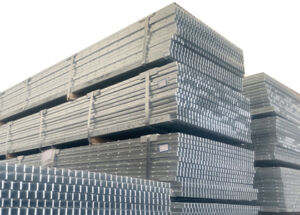Steel grating and stainless steel grating are both widely used in various industries for different purposes. While steel grating is known for its strength and durability, stainless steel grating offers corrosion resistance and a sleek appearance. In this article, we will compare the two types of grating to help you understand their differences and determine which one is best suited for your specific needs.

Steel grating is typically made of carbon steel, which is known for its high strength and load-bearing capacity. It is often used in industrial settings where heavy loads and foot traffic are common. On the other hand, stainless steel grating is made of an alloy of steel and chromium, which provides excellent resistance to corrosion and rust. This makes it ideal for outdoor applications and environments where exposure to moisture and chemicals is a concern.
When it comes to cost, steel grating is generally more affordable than stainless steel grating. However, stainless steel grating offers a longer lifespan due to its corrosion-resistant properties, which may result in lower maintenance and replacement costs in the long run. Additionally, stainless steel grating is aesthetically pleasing and can enhance the overall appearance of architectural and decorative applications.
In terms of installation and fabrication, both types of grating require professional expertise to ensure proper fitting and structural integrity. Steel grating is relatively easier to weld and fabricate, making it a popular choice for custom designs and specific project requirements. On the other hand, stainless steel grating may require specialized tools and techniques due to its hardness and resistance to corrosion.
When it comes to maintenance, steel grating may require regular cleaning and protective coatings to prevent rust and corrosion, especially in harsh environments. Stainless steel grating, on the other hand, is low maintenance and easy to clean, making it an ideal choice for applications where hygiene and cleanliness are crucial, such as food processing plants and medical facilities.
In terms of load capacity, steel grating is known for its high strength and load-bearing capabilities, making it suitable for heavy-duty applications such as industrial flooring, catwalks, and platforms. Stainless steel grating also offers impressive load-bearing capacity, making it suitable for similar applications where corrosion resistance is a priority.

When it comes to environmental impact, stainless steel grating is considered more environmentally friendly due to its recyclability and long lifespan. Stainless steel is 100% recyclable and can be reused without losing its properties, making it a sustainable choice for eco-conscious projects and applications. On the other hand, steel grating may have a higher environmental impact due to the mining and production of raw materials.
In summary, both steel grating and stainless steel grating have their unique advantages and applications. Steel grating is known for its strength, affordability, and versatility, while stainless steel grating offers corrosion resistance, low maintenance, and aesthetic appeal. The choice between the two will ultimately depend on the specific requirements of your project, including load capacity, environmental factors, budget, and desired lifespan.

